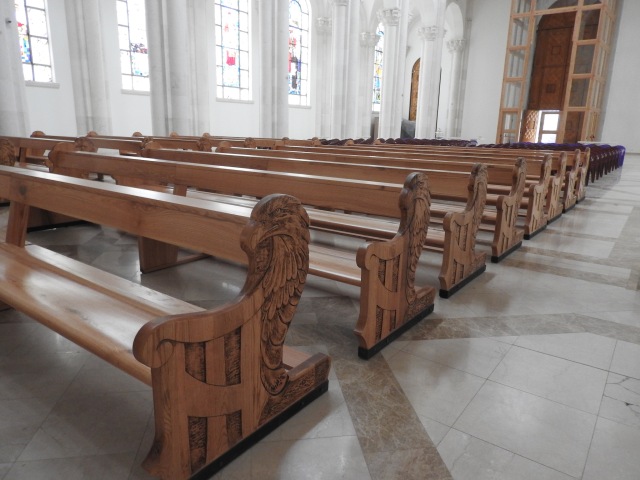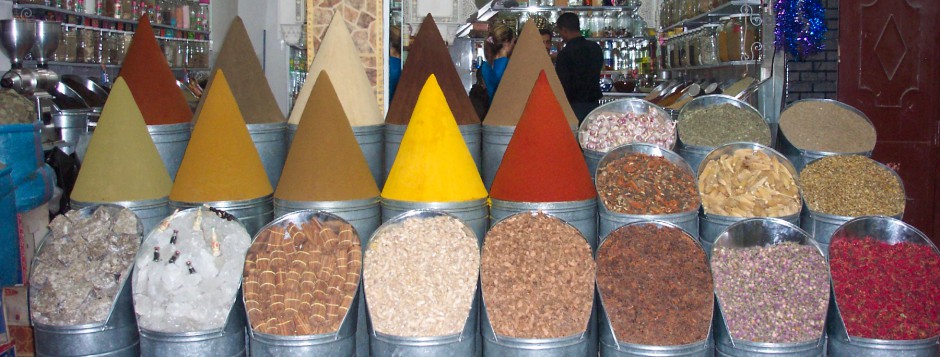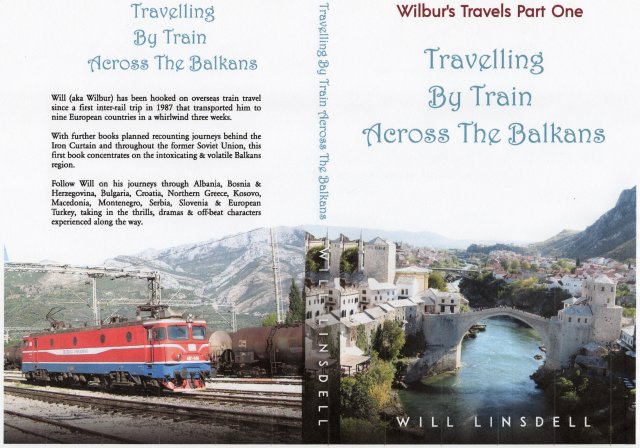A look back on my 2017 Balkan tour as featured in my book ‘Travelling By Train Across The Balkans‘, today featuring the capital of Kosovo.
Pristina, Kosovo
We had purposely booked a hotel close to the train station as we would be departing on the 07.10 next day. It had claimed to be just 200 metres from our departure point, but what it failed to mention was that this was though a trading estate, across a wasteland, down a muddy bank and over the train lines.
As I mentioned in my previous Kosovo post, the weather was on the inclement side and unsurprisingly yours truly slipped and took a tumble as we went in search of tickets. I still had the scar on my right wrist a month later! Oh well…….
The friendly guard kindly let me use his private bathroom to clean myself up and remove the grit from my wound. I took this shot of his desk, just about avoiding temptation to try out his cap & paddle!

The Guard’s Room, Pristina Train Station, Kosovo
He confirmed that train would run on time next day having spent the night docked in situ. Tickets could be purchased on board costing €2.50 to Hani where we would change trains to take us to Skopje at a further cost of €1.50. We would most likely have a diesel locomotive.
We then decided to invest in the luxury of a taxi to take us to the Ethnographic Museum (Muzeu Etnologjik) which was actually a traditional Kosovar house furnished as it would have been for centuries.

Ethnographic Museum, Pristina, Kosovo
Amil, our enthusiastic guide, told us the history of the Ottoman style dwelling, as well as much of the recent torrid history of the fledgling nation. He was just 11 years-old when the conflict finished and he told us stories of corpses in the road, hunger and constant fear. He also gave us good tourist information advice, well worth the €10 tip, especially as entry was free.

Hamish & I Inside Ethnographic Museum, Pristina
 The Kitchen
The Kitchen
A quick march through the thriving fruit ‘n veg market and after a few wrong turns we came to the small mosque that Amil had told us about.
 Pristina Market
Pristina Market
It was now lunch time and we had been recommended to try flia, the local favourite made up of 15-20 pancake like layers with not much in between. It was supposed to contain at least a little cinnamon paste, sour cream or something similar, but all we could see and taste was grease!

Pristine Pristina Bakery, Kosovo
After one mouthful for me and an aborted mouthful from Hamish, we abandoned the ‘delicacy’ for delicious chocolate cake and strong coffee. Make that two cakes!
We then made our way along George Bush Boulevard to the ultra modern Mother Teresa cathedral, which had only been consecrated two weeks before our visit.
Teresa was born in 1910 in Skopje (then part of the Kosovo Vilayet of the Ottoman Empire) of Albanian descent, and thankfully the Pristina cathedral was a more fitting tribute to the recently canonised Saint than the gaudy building in the North Macedonian capital.

Homage to Mother Teresa, Skopje
Refreshingly plain inside, it featured a stained-glass window of Saint Teresa standing hand in hand with the other most recent new Saint, Pope John Paul II.

Stained Glass Window, Mother Teresa & Pope John Paul II, Pristina
 Mother Teresa Cathedral, Pristina
Mother Teresa Cathedral, Pristina

Mother Teresa Cathedral Pews
The new age church featured a super-fast lift up its bell tower and for €2 we sped to the top for the best views in town. Despite the drizzle we could see a fair distance.
Having spotted the unusual national library building from on high, we decided that we could tick it off our ‘must see’ list without needing to trek there in the rain.

View Of Pristina Library From Mother Teresa Cathedral, Pristina
There was one other item I wanted to see – the sculpture named Heroinat.

Heroinat Sculpture, Pristina
Erected in 2015, the huge face depicted is made up of 20,000 identical discs of that same face.
The 20,000 number represents the estimated number of Kosovar women raped during the Yugoslav conflict.
Just let that sink in for a minute. 20,000 victims of an awful crime who will never ever receive justice in their lives and who will undoubtedly be unable to ever forget their ordeal.

Heroinat Disc, Heroinat Sculpture, Pristina
This really harrowing thought made me speechless for a while. Lots of the poor souls will undoubtedly have fallen pregnant too. That’s when I stopped thinking about the unpalatable what might have beens.
After taking a quick snap of the ‘New Born’ installation opposite (representing the rebirth of the fledgling nation), it was time for a dark beer, before returning via Madeleine Albright Street to our hotel and the adjacent pizzeria.

New Born Installation, Pristina, Kosovo
It was early to bed for us as we had a 5.30 start the next day for our first train journey of the 2017 Balkan tour, Pristina to Skopje. Despite our ‘proximity’ to the station, we took a taxi this time to avoid any accidents!
Pristina To Skopje On The Train
When Pristina was just a moderate city in Yugoslavia it was an outpost on a vast rail network with Belgrade at its hub and major transit points in Zagreb, Skopje, Sarajevo, Ljubljana, Podgorica, Nis & Ploce.
Pristina itself saw trains running to Skopje, Belgrade (via Mitrovica) and throughout Kosovo. Following the breakup of Yugoslavia, the horrendous conflict and Kosovo’s self-proclaimed independence from Serbia in 2006, Trainkos was born to run the network in the emerging nation.
With Serbia not recognising independence and dominating Kosovo’s borders, Trainkos did not have many international crossings to manage, save for a line to Skopje in the Former Yugoslav Republic of North Macedonia.
There was however a domestic network to run, as shown in the graphic below.

Sadly, economics have dictated that only the route to the Macedonian border remains.
Train infrastructure maintenance does not come cheap and buses are faster and therefore more popular.
Transport money was justifiably ploughed into the building of the hugely impressive Albania-Kosovo Highway, cutting journey times from Tirana to Pristina from nine hours of helter skelter & hold ups to four and a half hours of smooth flow between the forests & mountains, instead of up and around them.
With Kosovo being 90% populated by ethnic Albanians, this route was always going to be a priority.
This has left two trains a day running in Kosovo (and even fewer in Albania as it happened!) – the 07.10 departure to Hani I Elezit and the return, which pleasingly arrived back in Pristina at 19.10, exactly twelve hours after it had left.
We arrived at the station at 06.40, just in time to see our loco decoupled from the single passenger carriage and accompanying goods wagon, so it could chug up the track to a run round loop, back past the carriages and finally around another loop so that it could be rejoined to the train at the other end from whence it had started.
Click on LOCO1 & LOCO2 to see video footage of the manoeuvre.
Right on time our friend the station manager donned his red peaked cap, blew his whistle and waved his paddle and we were off on our 70km journey.
We were due to arrive at the border at around 9 and were expected to be in Skopje before 10.
The carriage interior was pleasingly scruffy, the toilet facilities refreshingly unusable!
We stopped at several stations en route, each manned by a red cap with two exciting duties to be performed each day ranging from 10 to 12 hours apart. The likes of Fushlot, Bablak and Stagove came and went as we trundled along purposefully at around 50 km/h.

Kosovo Train Guard
We shared most of the journey with what appeared to be Trainkos retirees.
Many wore the uniform of old and they greeted one another like long lost friends. Their conversation was animated with much laughter, shoulder squeezing and back slapping.
They were clearly reminiscing about the good times, maybe times of Yugoslavia under Tito when everything appeared to be stable.
Undoubtedly these aged men in their late sixties plus, would have some sadder tales to tell of conflict, deprivation and fear, but today was not a day for recollection of such, this was happy time recall only.
Each of their lined faces carried a broad smile, a joy to watch for us relative youngsters. The sense of belonging and comradeship is always a great comfort to help in keeping you battling on in times of adversity, convincing yourself that the good times will return…..
Back to our progress, we arrived at the small border station right on time but the waiting connecting train did not appear to be present.

Our Train At Han I Elezit, But Where’s The Connection?
We asked the guard, “is problem, buss”, came his most unwelcome reply. He pointed up the hill, so after taking a few pictures of our train in its new surroundings this is where me marched.
There was no sign of any bus and nobody seemed to know if, when and where one would appear.
There were however plenty of private cars doubling up as taxis. For €15 one would take us the 20km to Skopje.

Our “Taxi’, Han I Elezit, Kosovo
We chose a battered Mercedes and within a minute we were at the border post and arrived in Skopje before ten, choosing to be dropped at the train station so we could buy our tickets for that nights’ overnight adventure to Belgrade.
The train/bus station was the same grim monstrosity that we had frequented eleven years previously. The rest of Skopje had changed extensively, as you will read about here very soon…..
Kosovo & North Macedonia both feature in my book, as do train journeys in every other Balkan country. Read the full accounts and a fair amount of amusing stories by downloading it from Amazon.

Featuring Train Travel in Albania, Bosnia, Bulgaria, Croatia, Northern Greece, Kosovo, Montenegro, North Macedonia, Serbia, Slovenia, & European Turkey
Footnote – The Belgrade to Mitrovica Train
In early 2017 Kosovo agreed to allow a train from Serbia to take people to and from the Serb majority city of Mitrovica. In what nearly became a major flashpoint heightened tensions again in the region.
The short story is that the Serbs liveried the train with populist slogans proclaiming that Kosovo was still part of Serbia. Kosovo heard in enough time to halt the train’s progress at the border.

The Controversial Train
It took a mountain of diplomacy to diffuse the situation. It worked for the Serbian prime minister who sanctioned the stunt though. His popularity back home soared as a result and he was duly re-elected.















[…] You can read about my time in Pristina and the train journey I undertook at this link. […]
LikeLike
[…] We left on Kosovo’s only working train line up to the North Macedonia border. Read about my Pristina visit by clicking HERE. […]
LikeLike